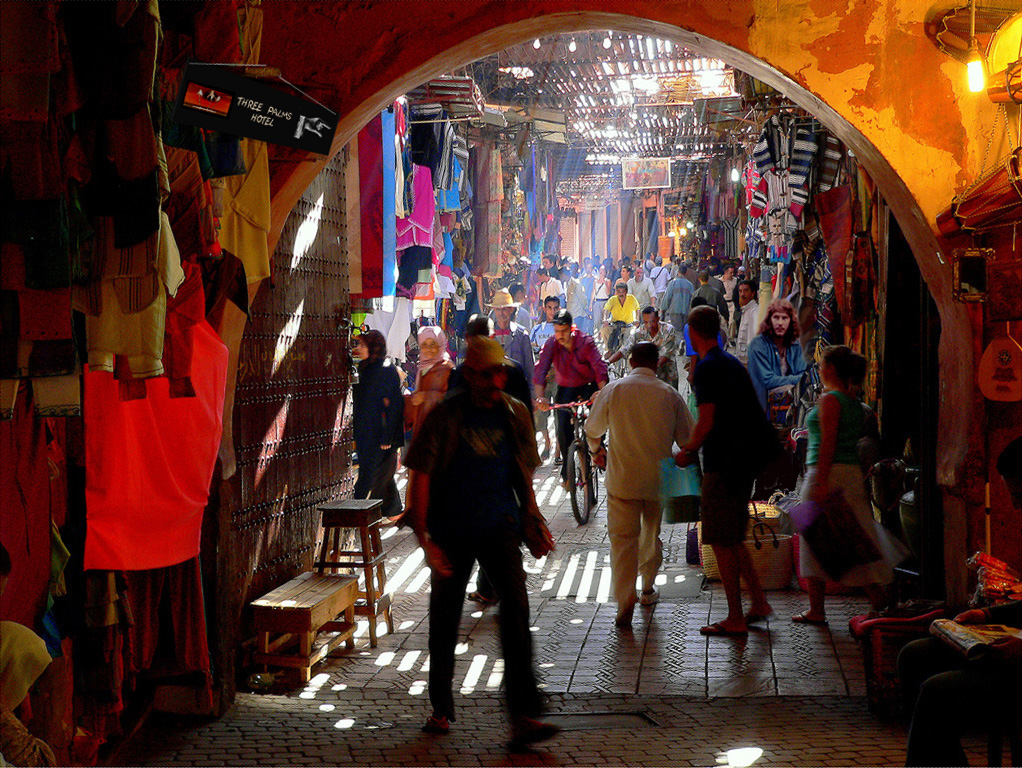

|
My first few days in Marrakech were spent visiting the market place Djemaa el Fna, and roaming about in the souk, trying to find my way back to the Three Palms Hotel. After a very short time you discovered that there were a few items of trade that were the favorites of the countless thousands of hippies that had already passed this way. Everyone knew what you wanted even before you asked. The main items were leather, over the shoulder bags, silver jewelry, and goulimine beads. I remember that they were called goulimine beads because most people thought that they came from a place in the south by that name. Now in the age of instant information, I find that Goulimine is actually a place called Guelmim.And that the so called goulimine beads are actually from Venice. These beads have an unusual history and I only stumbled on this story, while I was searching for Goulimine beads with Google's image search. The first big surprise was that there are virtually no images of Goulimine Beads, at least none in the large image category. I then started searching for any text concerning goulimine beads and here again the results are surprisingly few. It appears true that these beads were a hippie fad, and were sometimes known as "love beads". However a google image search of 'love beads' does not come up with any goulimine bead images. So I can only assume that this fad was not as widespread as I imagined. We can however find plenty of images of these beads under their "official" name of millefiore |
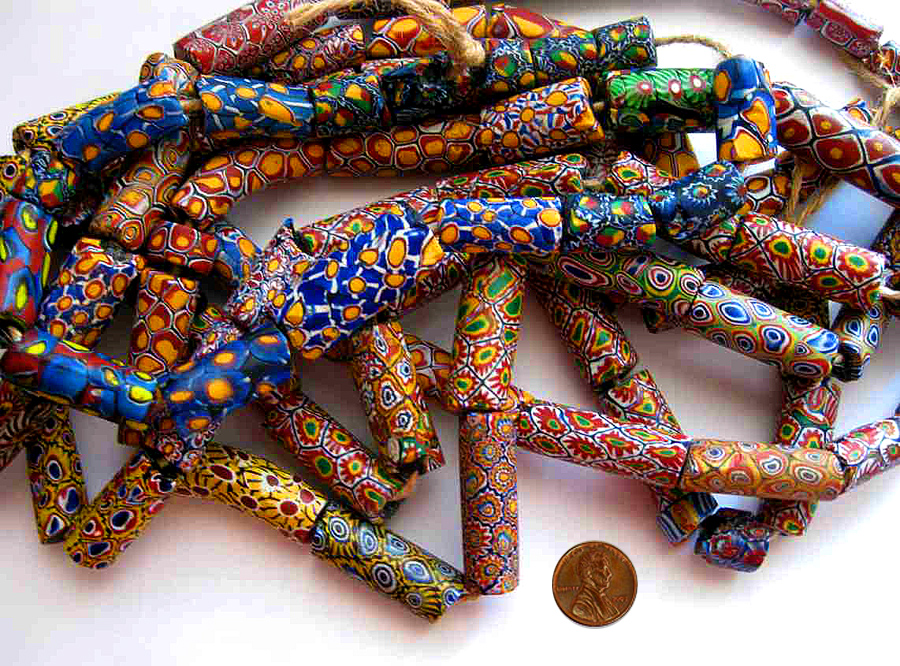
|
History of Millefiori (Wikipedia) The manufacture of mosaic beads can be traced back to Ancient Rome, Phoenician and Alexandrian times. Canes, probably made in Italy, have been found as far away as 8th century archaeological sites in Ireland, and millefiori was used in thin slices to brilliant effect in the early 7th century Anglo-Saxon jewellery from Sutton Hoo The technical knowledge for creating millefiori was lost by the eighteenth century, and the technique was not revived until the nineteenth century. Within several years of the technique's rediscovery, factories in Italy, France and England were manufacturing millefiori canes.[4] Until the 15th century, Murano glassmakers were only producing drawn Rosetta beads made from mould-made Rosetta canes. Rosetta beads are made by the layering of a variable number of layers of glass of various colors in a mould, and by pulling the soft glass from both ends until the cane has reached the desired thickness. It is then cut into short segments for further processing.[5] Slave beads From Wikipedia, the free encyclopedia Slave beads (often called Trade beads) were otherwise decorative glass beads used between the 16th and 20th century as a currency to exchange for goods, services and slaves (hence the name). Made to ease the passage of European explorers and then traders mainly across the African continents, the beads were made throughout Europe although the Venetians dominated production. Trade beads are also found in the United States and Canada, and throughout Latin America. The production of slave (trade) beads became so popular that literally tons of these beads were used for this purpose. Beads were used as ballast in slave/trade ships for the outbound trip. The beads and other trade items were exchanged for human cargo as well as ivory, gold and other goods desired in Europe and around the world. The beads traded were not of a set design, but were produced according to demand. Millefiori (thousand flower) beads from Venice, Italy were one of the most commonly traded beads, and are commonly known as "African trade beads." They were produced by creating flowers or stripes from glass canes, that were then cut and moulded onto a core of solid color. Beads such as the kiffa beads of Mauritania are thought to have resulted from women creating powdered glass beads to mimic the appearance of millefiori beads. |
|
It would seem then that goulimine beads are actually antique Venetian glass millefiori beads that found their way into Africa through the slave trade. These beads could be found in the 60's and early 70's in quantity in Guelmim, which was a sort of cross roads for camel traders. I have spent some time researching this interesting subject on the internet and I have discovered some important web sites for those of you who want to know all there is to know about these beads. The first I want to point out is found on the Bead Collector Network and is an article by Jamey Allen Canes for Millefiori Work Here the author presents a classification system for the canes from which Millefiori are composed. If you want to know how to recognize these beads from the inside out this is the place to start. |
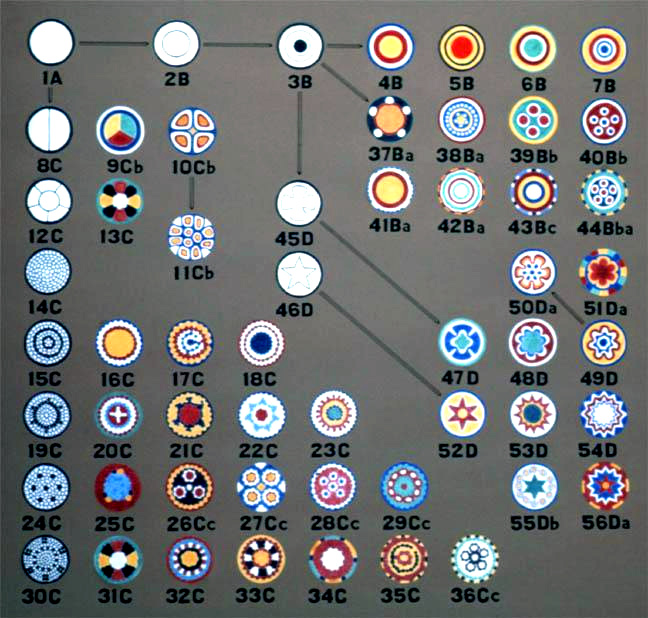
|
The classification divides canes into different groups according to how they are manufactured, and shows a number of typical examples of specimens from these groups. The patterns are circular images that represent a cane as seen in cross section, or what slices of cane look like before they are placed onto a bead (or artifact) and fused together. This process usually distorts the pattern or design to some degree. |
|
The next most informative page is found on an amazing site called Galerie Ezakwandu Gallery of Trade Beads African Slave Beads African Currency Here you find not only the history of Trade Beads but a full description of the many different types of African Trade beads. |
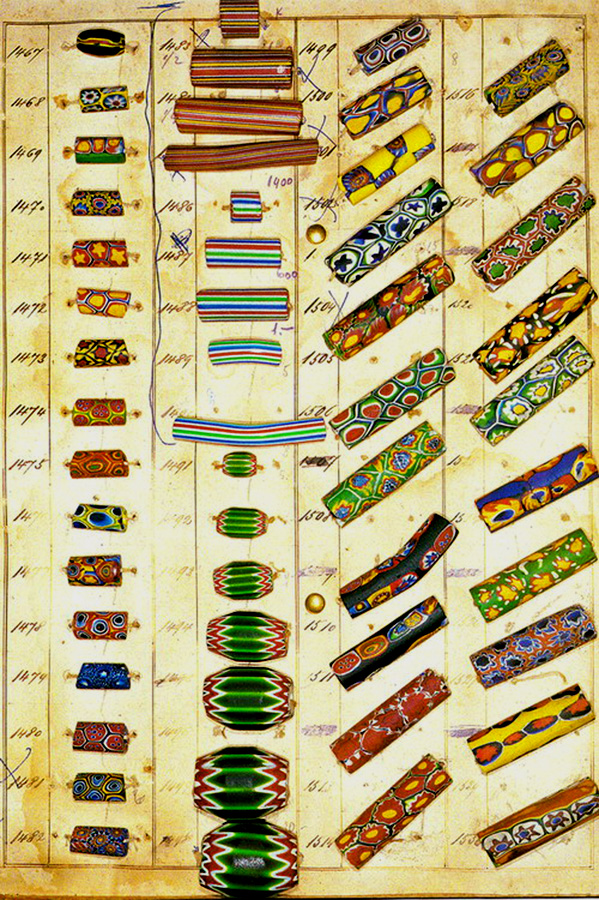
| The bead cards and larger bead images found on this page represent trade beads in museum and private collections. However, the beads and information found in the charts that follow were obtained from Scott Semans extensive and informative price lists. His first hand experience with traders, adds quality information to the history of bead trade. You may contact Scott Semans for prices and availability of his items by clicking his name, which appears throughout this webpage. Mention of 'Dubin' refers to Lois Dubin's fantastic book, 'The History of Beads'. Peter Francis wrote quite a number of wonderful books which include 'Beads of the World' and 'The Glass Trade Beads of Europe'. John and Ruth Picard wrote and produced numerous volumes of exciting and visually important books and or documents, the first of which was entitled; 'Chevron Beads from the West African Trade'. |
|
Another important site is
The Picard Trade Bead Museum And African Art Gallery Here you can see a huge collection Trade Beads of all kinds as well as order the definitive book on Millefiori. |
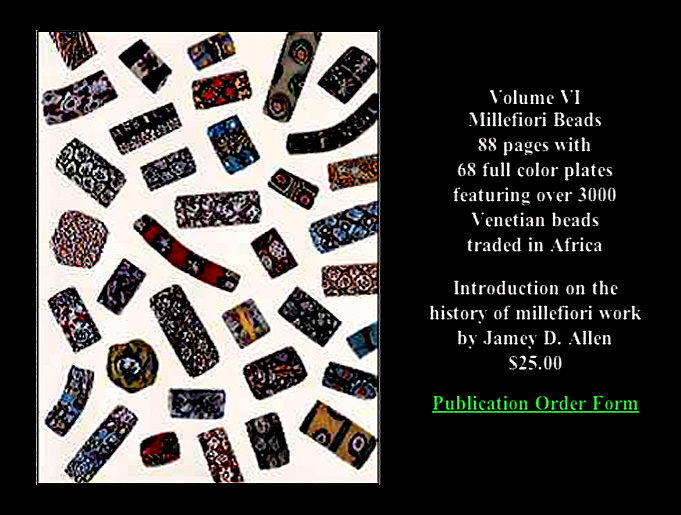
|
The first question that a non-hippie (I am sure this used to be spelled Hippy) might ask, is why did hippies home in on goulimine beads? Considering the vast range of trade beads found in the souks of Morocco, it may seem at first a bit mysterious. My theory is that hippies liked these millefiori beads because of their "psychedelic" appearance, to explain this a bit further for the non-initiate, we find an excellent description in the book: LSD Psychotherapy: Exploring the Frontiers of the Hidden Mind, by Stanislav Grof, M.D., 1980, Hunter House, Alameda, California |
| In the first few LSD sessions, especially if the dosage is kept within the range of 100-150 micrograms, there is usually a preponderance of abstract experiences of various kinds. With the eyes closed, most LSD subjects have incredibly colorful and dynamic visions of geometric designs, architectural forms, kaleidoscopic displays, magic fountains, or fantastic fireworks. |
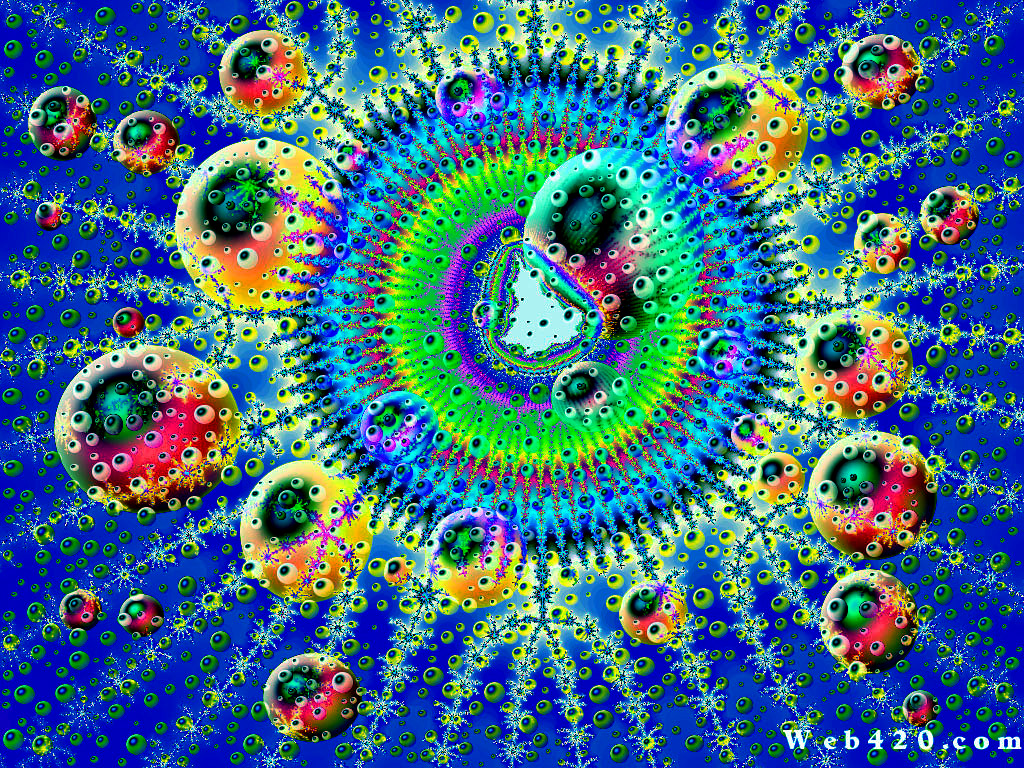
| This is not exactly what it looks like when you are tripping, what it looks like is a thousand times more amazing because it is alive and constantly transforming.... and when you close your eyes, it sometimes looks a bit like this.... |
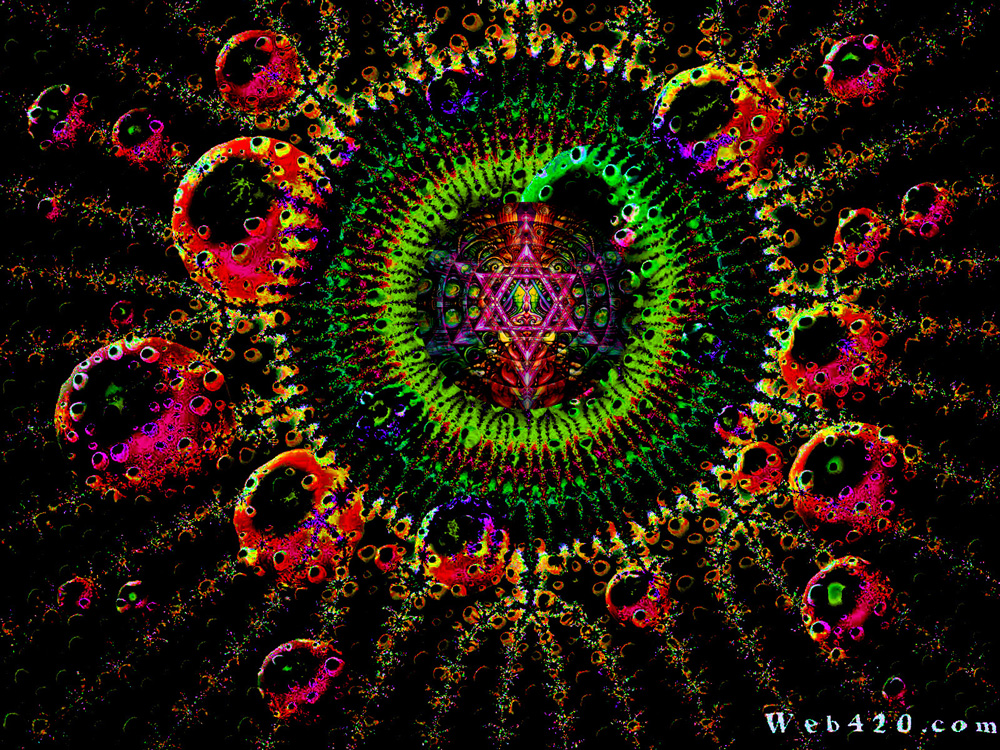
| Someone is bound to ask, where is the mystery in all this? The mystery, for my money, is in the fact that many, if not most people, experimenting with LSD, report seeing 'things'... colorful geometric designs. Lets say we send 100 people to Mars and most of those who return report that they saw colorful birds floating around them. Would we then guess that there is life on Mars? This same sort of cognitive leap has not happened with the inner-space reports of 'visions'. Imagine this, that the brain, when tuned to the right frequency, is able to capture images that are not necessarily imaginary. I hate to use the word astral or hypnagogic, because I think this may divert us from finding out what this is really about. Lets say anyway that there is a universal, all permeating different dimension that is filled with image entities, stars, triangles, cubes, spheres, or flowers, letters, numbers, words, thousands of different images floating through inner-space. I suggest this, as impossible as it might sound, to partially explain how everyone can see them (once correctly tuned). Further to this idea I suggest that a group of people correctly tuned will see the same images almost simultaneously. Imagine a small group of people sitting in a comfortable dimly lit room that has but one source of light, the trusty old red lava lamp. In the background we hear music, a beautiful romantic ballade. Everyone in that room will at some point, be seeing hearts and flowers. It would be easy to imagine that one person is projecting hearts and flowers, and the others are tuning in on them, but what if the minds in that room were like one pool of water and in that pool are floating images that everyone can see, they are not my imaginary creation transmitted to you, they are images in their own right... the patterned images found on goulimine beads are like these images, moving, changing, transmuting. |